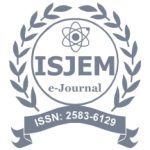NEURALINK
- Version
- Download 5
- File Size 228.51 KB
- File Count 1
- Create Date 19 May 2023
- Last Updated 19 May 2023
NEURALINK
Student: Eczheelia.V
Email ID:eczheeliav22bcs117@skasc.ac.in
Department of computer science, Sri Krishna Arts and Science College, Coimbatore
ABSTRACT
Brain-machine interfaces hold promise for the restoration of sensory and motor function and the treatment of neurological disorders, but clinical brain-machine interfaces have not yet been widely adopted, in part, because modest channel counts have limited their potential. In this white paper, we describe Neuralink’s first steps toward a scalable high-bandwidth brain-machine interface system. We have built arrays of small and flexible electrode “threads,” with as many as 3072 electrodes per array distributed across 96 threads. We have also built a neurosurgical robot capable of inserting six threads (192 electrodes) per minute. Each thread can be individually inserted into the brain with micron precision for avoidance of surface vasculature and targeting specific brain regions. The electrode array is packaged into a small implantable device that contains custom chips for low-power on-board amplification and digitization: The package for 3072 channels occupies less than 23×18.5×2 mm3. A single USB-C cable provides full-bandwidth data streaming from the device, recording from all channels simultaneously. This system has achieved a spiking yield of up to 70% in chronically implanted electrodes. Neuralink’s approach to brain-machine interface has unprecedented packaging density and scalability in a clinically relevant package.
KEYWORDS
Brain-machine interface, sensory function, motor function, neurology
Download
